ABP(ASP.NET Boilerplate Project)快速入門
阿新 • • 發佈:2020-06-28
# 前言
這兩天看了一下ABP,做個簡單的學習記錄。記錄主要有以下內容:
1. 從官網建立並下載專案(.net core 3.x + vue)
2. 專案在本地成功執行
3. 新增實體並對映到資料庫
4. 完成對新增實體的基本增刪改查
ABP官網:https://aspnetboilerplate.com/
Github:https://github.com/aspnetboilerplate
# 建立專案
進入官網
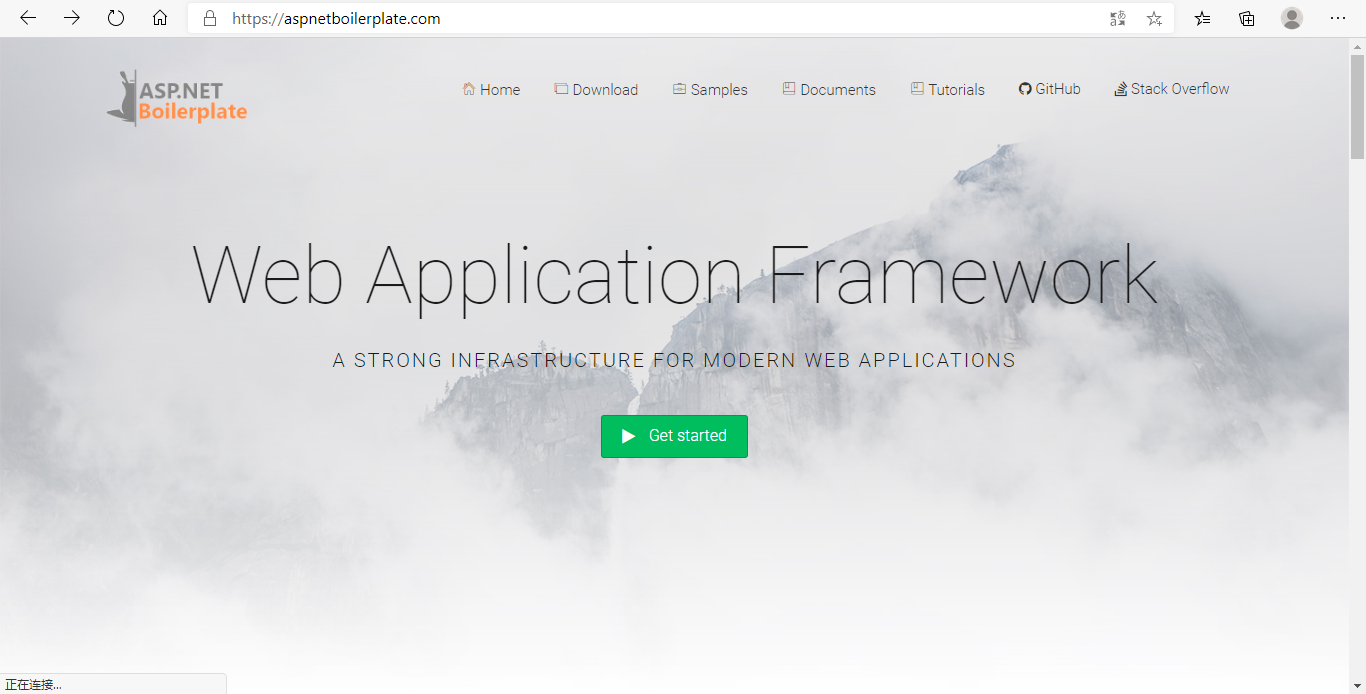
Get started,選擇前後端技術棧,我這裡就選.net core 3.x和vue。

填寫自己的專案名稱,郵箱,然後點create my project就可以下載專案了。
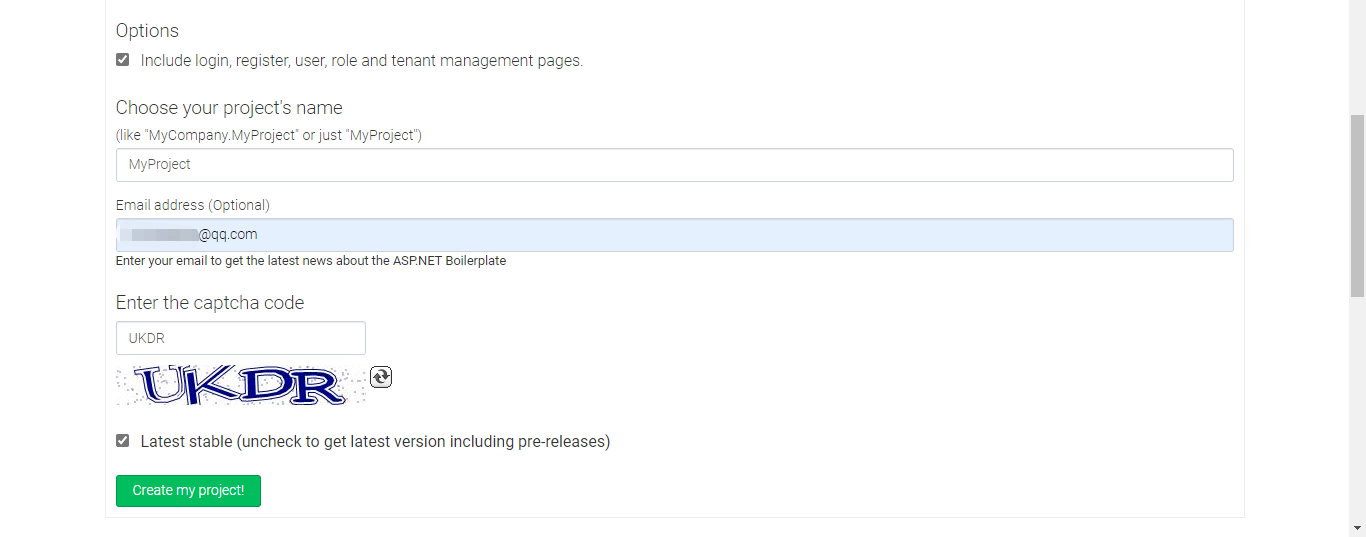
解壓檔案

# 執行專案
## 後端專案
首先執行後端專案,開啟/aspnet-core/MyProject.sln
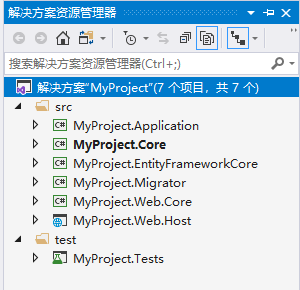
改一下MyProject.Web.Host專案下appsettings.json的資料庫連線字串,如果本地安裝了mssql,用windows身份認證,不改也行

資料庫預設是使用mssql的,當然也可以改其他資料庫。
將MyProject.Web.Host專案設定為啟動項,開啟程式包管理器控制檯,預設專案選擇DbContext所在的專案,也就是MyProject.EntityFrameworkCore。執行`update-database`
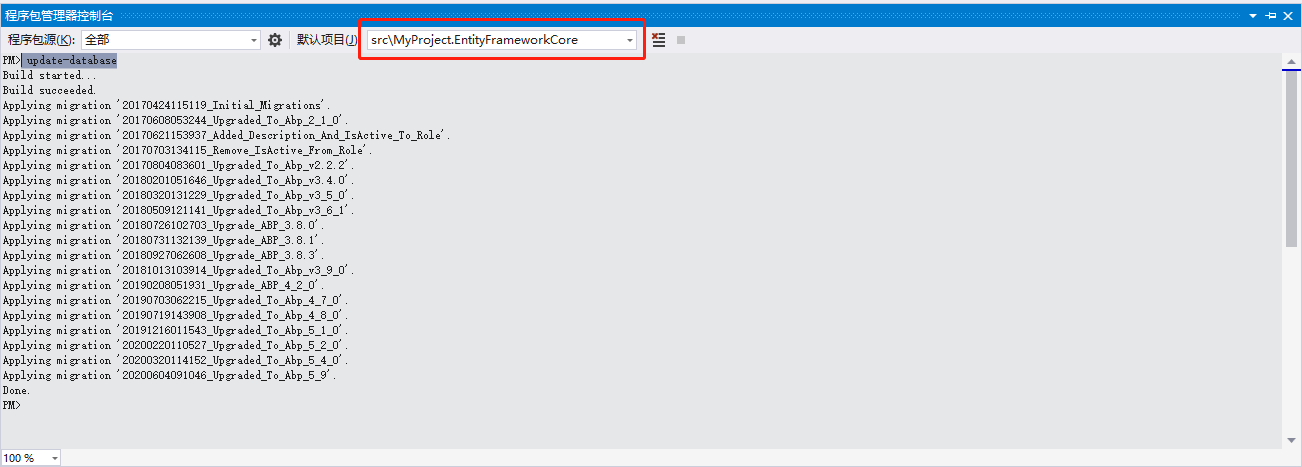
資料庫已成功建立:

Ctrl+F5,不出意外,瀏覽器就會看到這個介面:

## 前端專案
後端專案成功運行了,下面執行一下前端專案,先要確保本機有nodejs環境並安裝了vue cli,這個就不介紹了。
/vue目錄下開啟cmd執行:`npm install`
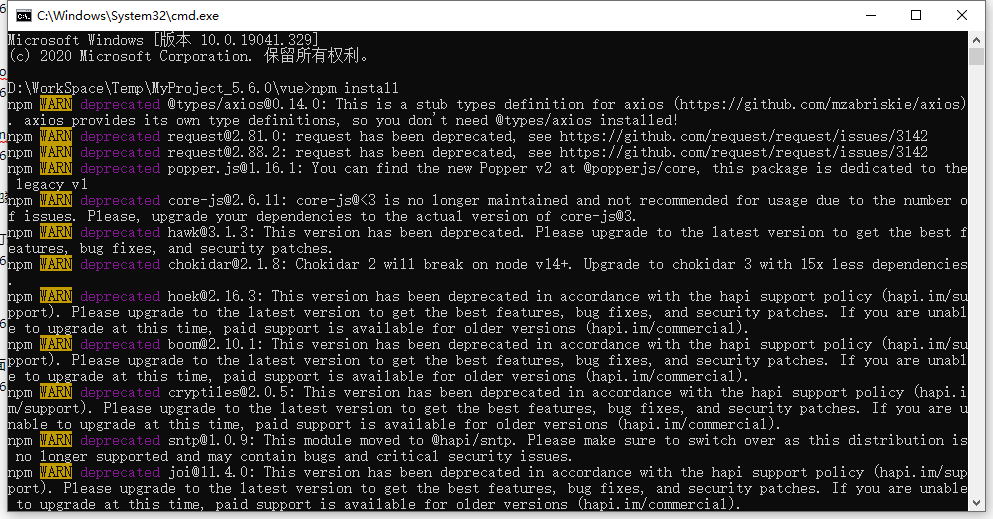
install完成後執行:`npm run serve`
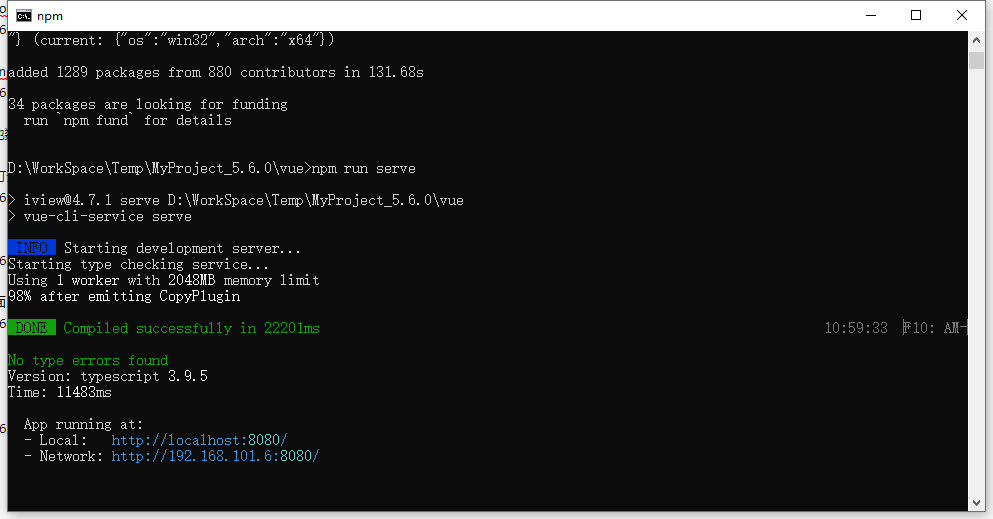
開啟瀏覽器訪問http://localhost:8080/,不出意外的話,會看到這個介面:
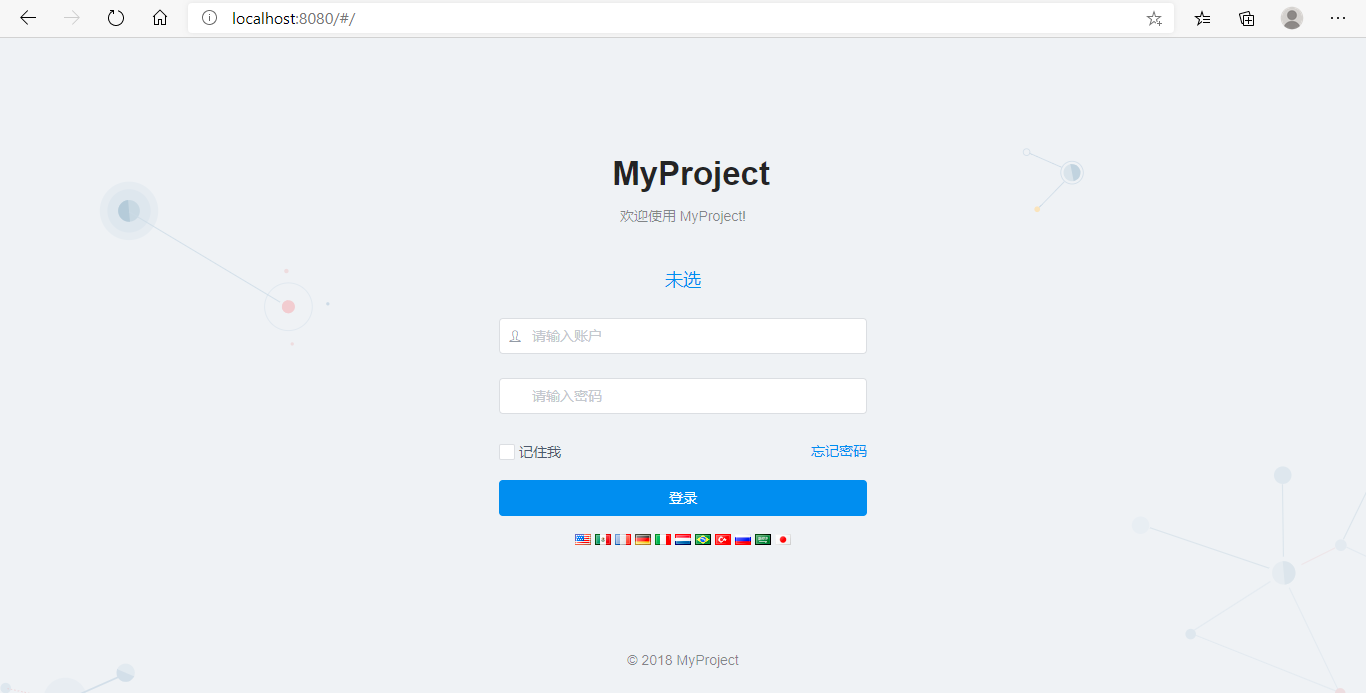
使用預設使用者 admin/123qwe 登入系統:
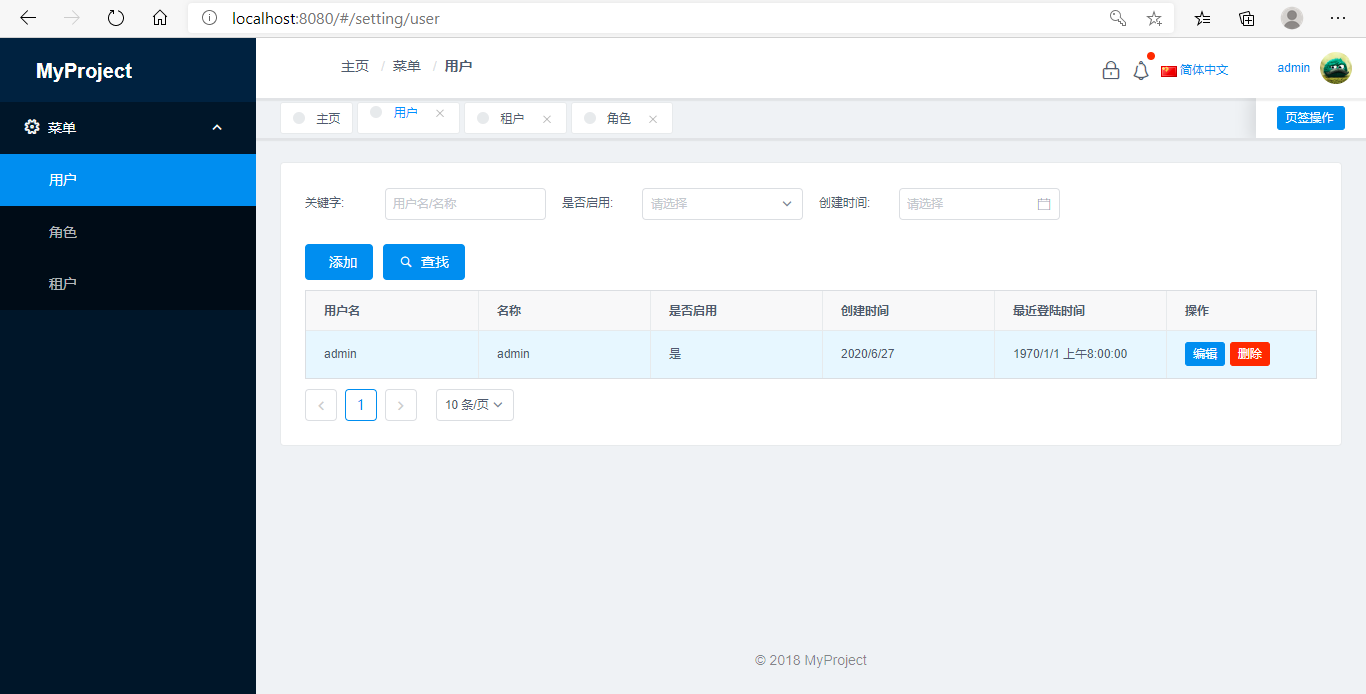
至此,前後端專案都已成功執行。
那麼基於abp的二次開發該從何下手呢,最簡單的,比如要增加一個數據表,並且完成最基本CRUD該怎麼做?
# 新增實體
實體類需要放在MyProject.Core專案下,我新建一個MyTest資料夾,並新增一個Simple類,隨意給2個屬性。

我這裡繼承了abp的Entity類,Entity類有主鍵ID屬性,這個泛型int是指主鍵的型別,不寫預設就是int。abp還有一個比較複雜的FullAuditedEntity型別,繼承FullAuditedEntity的話就有建立時間,修改時間,建立人,修改人,軟刪除等欄位。這個看實際情況。
```
public class Simple : Entity
{
public string Name { get; set; }
public string Details { get; set; }
}
```
修改MyProject.EntityFrameworkCore專案的/EntityFrameworkCore/MyProjectDbContext:
```
public class MyProjectDbContext : AbpZeroDbContext
{
/* Define a DbSet for each entity of the application */
public DbSet Simples { get; set; }
public MyProjectDbContext(DbContextOptions options)
: base(options)
{
}
protected override void OnModelCreating(ModelBuilder modelBuilder)
{
base.OnModelCreating(modelBuilder);
modelBuilder.Entity(p =>
{
p.ToTable("Simples", "test");
p.Property(x => x.Name).IsRequired(true).HasMaxLength(20);
p.Property(x => x.Details).HasMaxLength(100);
});
}
}
```
然後就可以遷移資料庫了,程式包管理器控制檯執行:`add-migration mytest1`,`update-database`

重新整理資料庫,Simples表已生成:
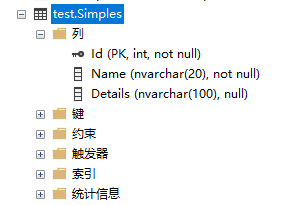
# 實體的增刪改查
進入MyProject.Application專案,新建一個MyTest資料夾

## Dto
CreateSimpleDto,新增Simple資料的傳輸物件,比如ID,建立時間,建立人等欄位,就可以省略
```
public class CreateSimpleDto
{
public string Name { get; set; }
public string Details { get; set; }
}
```
PagedSimpleResultRequestDto,分頁查詢物件
```
public class PagedSimpleResultRequestDto : PagedResultRequestDto
{
///
/// 查詢關鍵字
///
{
public string Name { get; set; }
public string Details { get; set; }
}
```
SimpleProfile,用來定義AutoMapper的對映關係清單
```
public class SimpleProfile : Profile
{
public SimpleProfile()
{
CreateMap();
CreateMap();
CreateMap();
}
}
```
## Service
注意,類名參考abp的規範去命名。
ISimpleAppService,Simple服務介面。我這裡繼承IAsyncCrudAppService,這個介面中包含了增刪改查的基本定義,非常方便。如果不需要的話,也可以繼承IApplicationService自己定義
```
public interface ISimpleAppService : IAsyncCrudAppService
{
}
```
SimpleAppService,Simple服務,繼承包含了增刪改查的AsyncCrudAppService類,如果有需要的話可以override這些增刪改查方法。也可以繼承MyProjectAppServiceBase,自己定義。
```
public class SimpleAppService : AsyncCrudAppService, ISimpleAppService
{
public SimpleAppService(IRepository repository) : base(repository)
{
}
///
/// 條件過濾
/// CreateFilteredQuery(PagedSimpleResultRequestDto input)
{
return Repository.GetAll()
.WhereIf(!input.Keyword.IsNullOrWhiteSpace(), a => a.Name.Contains(input.Keyword));
}
}
```
## 介面測試
重新執行專案,不出意外的話,Swagger中就會多出Simple相關的介面。

- Create


- Get


- GetAll


- Update
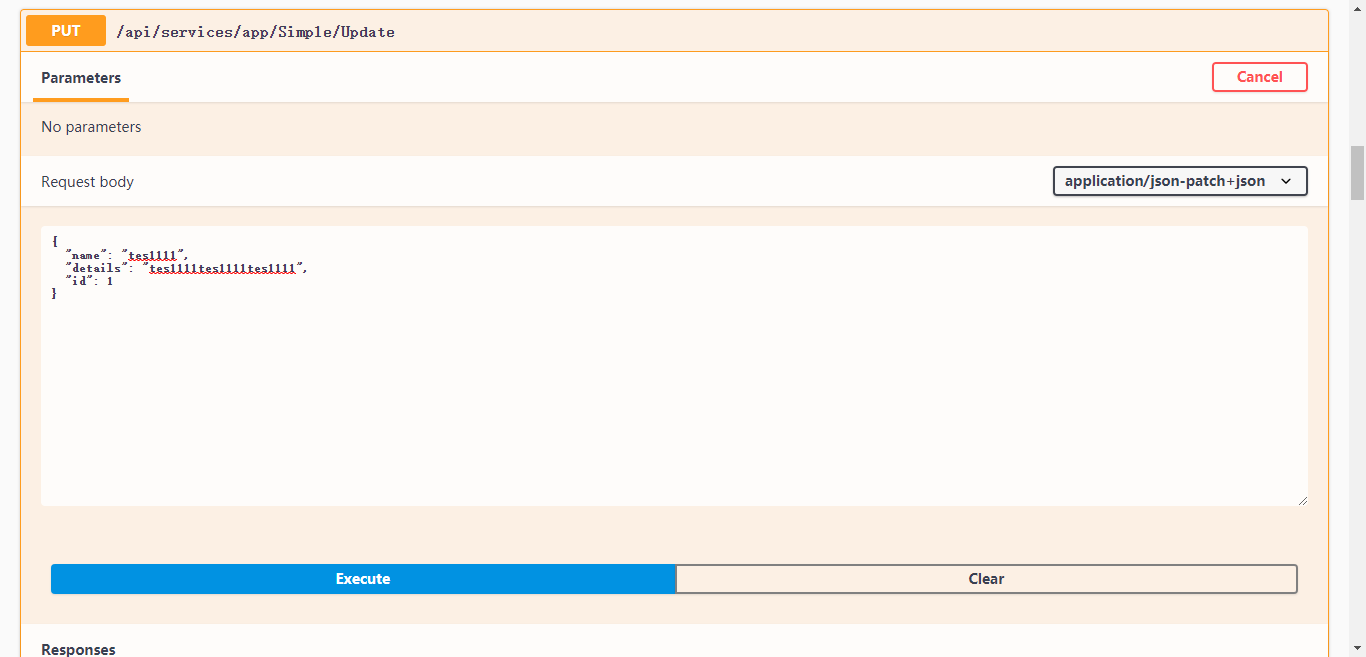
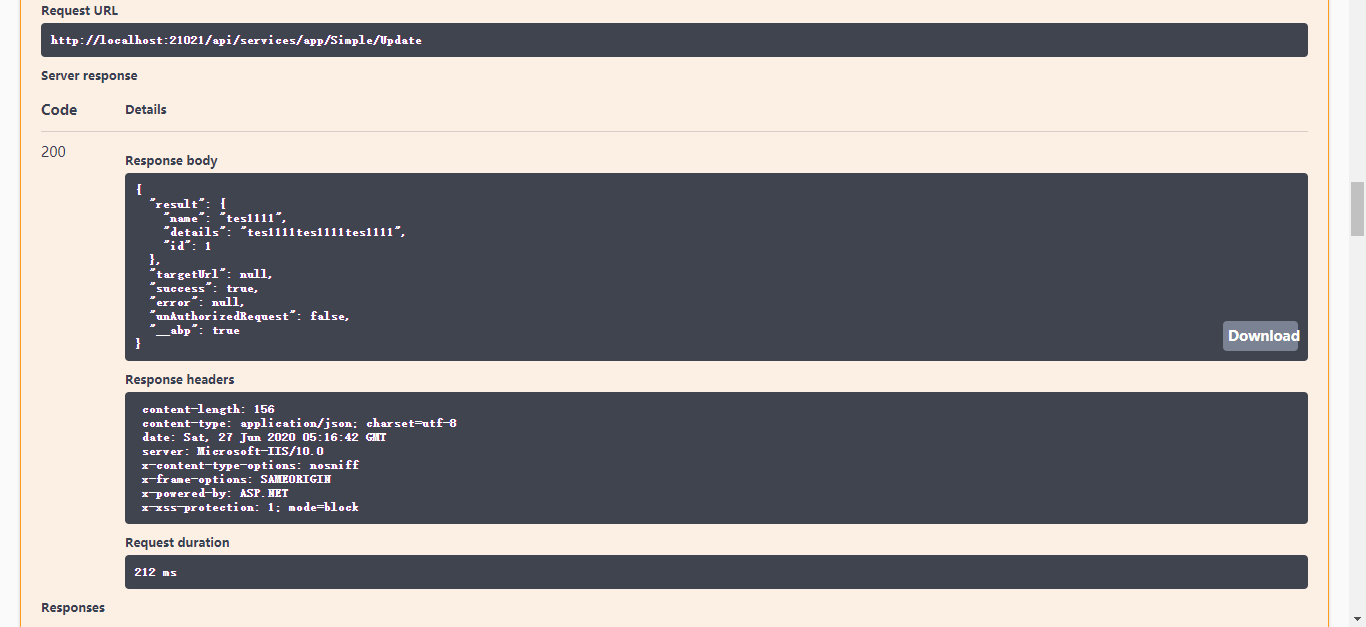
- Delete

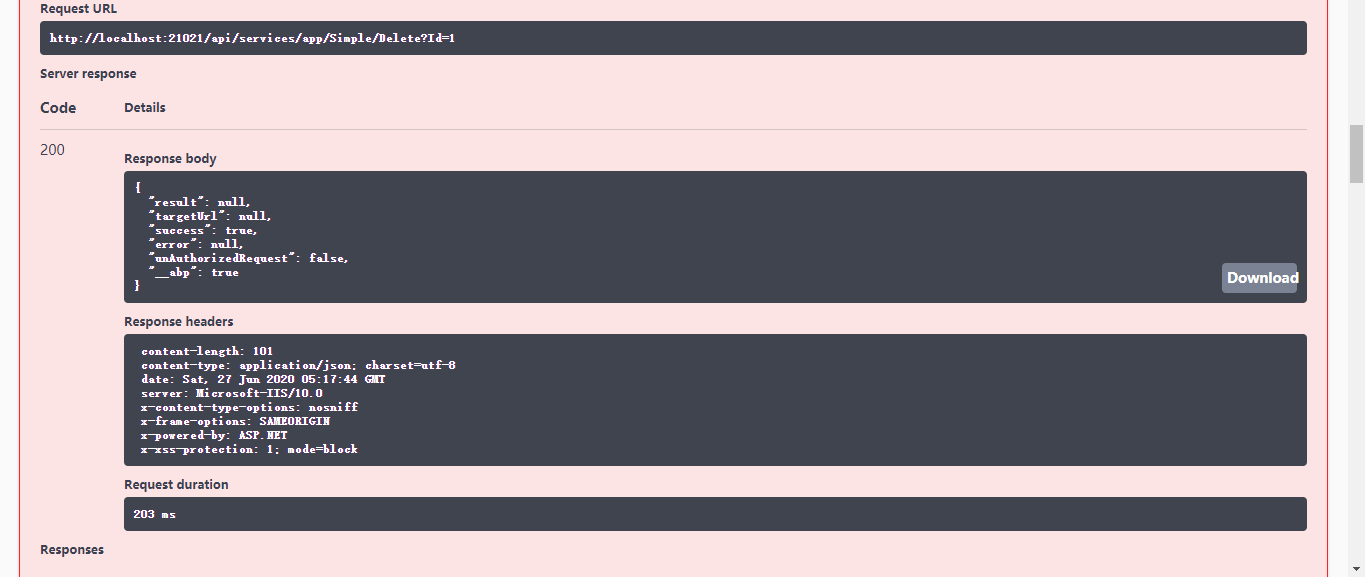
# 總結
ABP是一個優秀的框架,基於ABP的二次開發肯定會非常高效,但前提是需要熟練掌握ABP,弄清楚他的設計理念以及他的一些實現原理。
以後有時間的話再深入學習一下。文中如果有不妥之處歡迎
